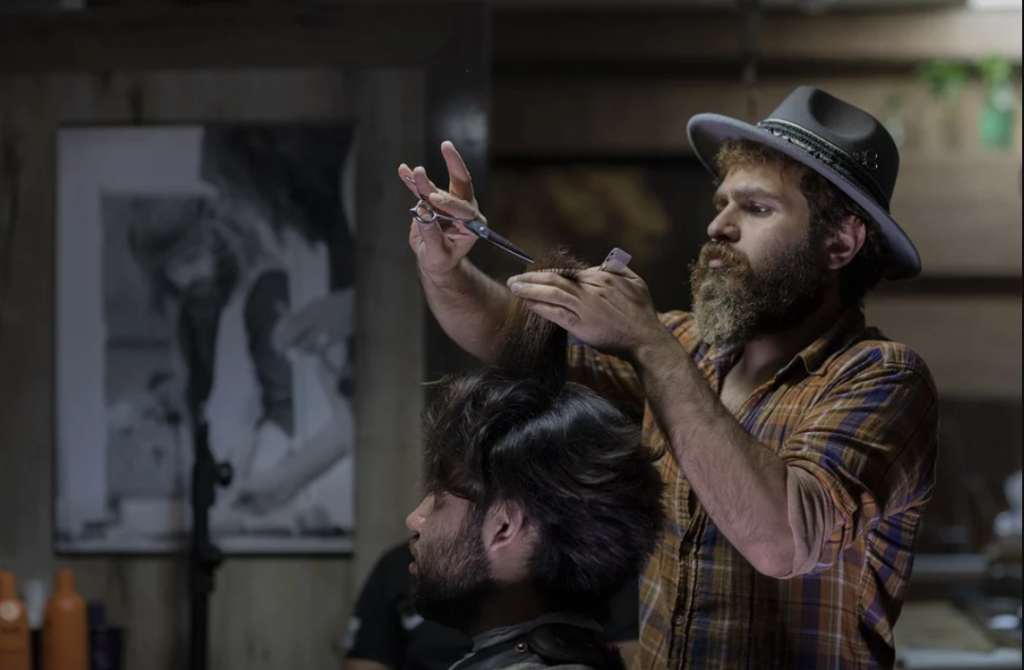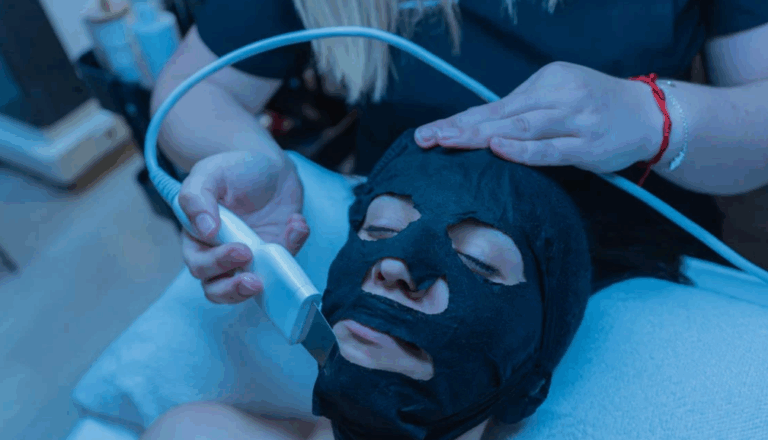
Barbering is one of the oldest customer service professions. Some people who are fascinated by becoming a barber might be thinking it is a cool profession. You can become a famous barber overnight. They believe once they have a degree from barber school, they can start cutting their hair immediately. If you daydream a lot without understanding the practical world, then you might be very disappointed.
There are several paths to becoming a barber, but they all have one thing in common: hunger and drive! Regardless of which path you take, you must exhibit your want to succeed for this to happen for you. Continue reading to learn how to become a barber in this step-by-step guide!
Barbering as a profession
A barber is a trained individual who is responsible for maintaining the health of one’s hair. He is the one who arranges your hair so that you appear attractive. He cuts, trims, and styles your hair, giving it a lovely appearance.
Both men and women go to the barber to get their hair cut or styled. Barbershop services are the most well-known for men’s grooming. Men can request that their hair be cut in a particular style that is currently popular. You may get the new look by simply trimming your hair in various fashions.
Barbering may be a very creative and financially rewarding job. The barbering industry is constantly expanding, and as a result, it has grown in popularity as a job, whether you are a total novice or a career switcher.

Basic Requirements for Barbering
Barbering involves both educational and practical experience. In this article, we’ll go through the requirements for becoming a barber :
1. Education
To become a barber, you must first have your high school graduation. You will be eligible to enrol in barber training programs as a result of this. Attending a state-approved barber program can assist you in obtaining the necessary licensing to open your own barbershop. Barbers learn haircutting and shaving methods and industry best practices, sanitation, customer service, safety, and preparation in these programs.
Apprenticeships can be used to supplement conventional barbering education. Barbers who serve as apprentices gain hands-on experience working with real customers and experienced experts while also earning money. Barbers who complete apprenticeships must still apply for and maintain a license to begin working as a professional barber legally.
2. Training
Barbers that have completed barbering programs are usually well-trained. While new barbers can get experience working as an assistant or intern, some places may mandate them to serve as an assistant or intern. When students attend a state-approved barber school, they will have several opportunities for hands-on training. Some salons may require barbers to conduct administrative activities during working hours to understand better how the business works. Starting out as a barber requires a lot of on-the-job training. These classes inform barbers about the products and services available at the salon. Scripted advertising for the establishment’s products and services are sometimes used.
3. Certification
Obtaining specific certificates is not required to work as a barber, although licensure is. A person must be at least 16 years old to obtain a barbering license. It also necessitates the completion of barber training programs and the passing of the licensing examination. In the majority of circumstances, states can offer apprentice or master barber licenses based on experience.
Let's take a closer look at the 3 training routes you could take :
Private Courses (2 to 3 months)
For novices, there are a variety of private courses available. Intensive introductory courses should allow you to earn an NVQ and cut hair competently in a professional environment. Depending on the degree of qualification you want, these courses might last anywhere from 9 to 12 weeks.
PROS:
Smaller class sizes, which means more 1-to-1 support
More cutting experience on live models
Can be completed in a few months
Highly skilled educators who are solely barbering focused
Learn extra techniques such as wet shaving, which is not taught at college
CONS:
More expensive than college
Bottom-line: Private training is the best option to getting the skills you need to work as a barber.
Apprenticeship (2 to 3 years)
Barbering apprenticeships normally last 2 to 3 years and are geared for people between the ages of 16 and 18. You’ll need to find a barbershop that will take on an apprentice and a college that will train you once a week for an NVQ in order to enrol in an apprenticeship.
PROS:
You do not have to pay for it
You gain an NVQ qualification
CONS:
It takes a long time to complete
You only train once in the week, which can slow down your learning process
You will only be doing 1-2 cuts a week
A lot of time will be spent helping out in the shop before actually beginning to cut hair
You may only learn one style of Barbering from having only one person training you
You may have to source your own models
Bottom-line: An apprenticeship offers only a limited amount of hair extensions, haircutting, but it allows you to get a feel of how a salon works. There is no monetary cost for an apprenticeship, only your time and opportunity cost.
Further Education College (1 to 2 years)
A further education college offers a wide array of courses, one of which may be a barbering course. These courses last 1 to 2 years. How much is a barbering course at college? These courses are generally free.
PROS:
Costs less than private training
Training times are more flexible
You gain an NVQ qualification
CONS:
Limited cutting experience
Class sizes are large at 20 or more students, meaning you don’t get much 1-on-1 training.
Students practice primarily on head blocks, and they only do about 1 or 2 cuts per week, often share models and have to source their own models. This makes it tough to build a rhythm and develop your skill when you’re only doing a couple of haircuts per week.
Colleges tend to be more theory-based with training and stick to book learning. However, barbering is a hands-on profession and requires lots of practical experience.
There is often inconsistency in the teaching over the 2 years, with teachers sometimes leaving midway. Hairdressers typically teach college classes with limited real-life experience.
Bottom-line: You could graduate with limited cutting experience and without the skills needed to work as a barber.
How to Become a Barber Step by Step
You can count on your customers on a regular basis if you complete a barbering program, obtain your state license, and create a loyal clientele. So if you are interested in finding out what lies ahead in becoming a professional barber, here are the 5 major steps you should know about.
1. Get your high school diploma
To enrol in barber school, you must be at least 16 years old and have either a high school diploma or a GED. To be granted a license, you must complete an approved training program at a legitimate beauty or barber school and pass a state exam, while a few states let you complete the requisite training hours through apprenticeship.
The time it takes to become a licensed barber is determined by several factors. The length of time it takes to complete the program is determined by whether you attend barber school full-time or part-time or have chosen to apprentice. The number of hours needed to become a barber varies by jurisdiction; however, most states demand between 1500 and 2000 hours of training. Apprenticeships are frequently twice as long as a school for people who choose to do them instead of going to school.
Finally, how long it takes you to pass the licensing exam, which normally comprises a written section and a practical hands-on section, will determine how long it takes you to become a certified barber. Most people finish a school-based training program in 12 to 24 months, depending on their circumstances. Schools for barbers vary widely in price because of a variety of reasons. They can range anywhere from under $5,000 up to more than $20,000.
While in high school, you may have the option to prepare yourself for your barbering career. Any classes on hairstyling, small business management, or accounting can be a serious benefit to your career. Many high schools partner with community colleges to offer more specialized courses for students. You might be able to take a course in Barbering or hairstyling, which will give you a head start in your career.
2. Assist an Experienced Barber
You may also inquire whether a nearby barber will hire you on a part-time basis. Explain your plans to him, and tell him you’ll be happy to assist him with anything he needs around the shop as you monitor his everyday activities. Try to pay attention to the following:
- What is the best way to organize space and equipment?
- How to connect with consumers in a certain way.
- How are chores and workflow handled?
- Various errands that you may not have considered
Short of allowing you to cut customers’ hair, a barber can show you how to interact with customers, organize a workspace and manage workflow in a shop. Cleaning and organizing equipment, sweeping up and running miscellaneous errands are also possible duties if a barber agrees to take you as an assistant.
3. Graduate from a Barbering Program
When you attend barber school, you will acquire a variety of skills and methods. You should understand how to shape a person’s hair and cut hair the best way possible based on the customer’s preferences. You’ll have to understand the ins and outs of snips and shaves and the business side of things because your education and time are investments. Some states additionally demand a certain number of hours of practice before being considered for a barber license. You’ll also learn a lot about barbershop safety and cleanliness, which is an important part of doing your work well and safely. Barber school often teaches business management skills, so if your career path leads you to create your own shop or work as a salon manager, you’ll be prepared.
4. Take into Account Legal Considerations
Some of this may be covered in your barbering program, but on the business side of things, you might not think about the cost of insurance; you may need to hair wash, cut hair and shave. Accidents, though few and far between, do occur. You’ll need to protect yourself and your clients from issues that might arise from being uninsured.
5. Get the License
Regardless of where you live, you will be required to take an examination to demonstrate that you are qualified to work as a barber. This exam may be specific to your state or a national exam. Some states even use a mix of state and national assessments, although the written section of the exam will always be the same.
6. Think to start your career
As a newly licensed barber, you have a number of options. You might wish to work as an apprentice under a more experienced pair of scissors until you’re completely secure in your abilities and ready to go it alone. Additionally, you can:
Work for a commission at a barbershop.
Obtain a chair from a nearby barbershop.
Make an agreement with a spa.
Open a barbershop of your own.
Skills required for Barbering
Barbering entails more than just trimming your customers’ hair. It’s all about providing them with a relaxing grooming experience. As a barber, this usually entails listening to your customers, allocating adequate time for each customer, and so on. We’ve compiled a list of the essential skills for becoming the finest barber you can be.
1. Detail-orientated
Each customer who enters your store has a distinct want. No two heads are alike, and neither are their hair. To satisfy customers, you must first figure out exactly what they want so that you can give them the best possible results. You may achieve this with each and every consumer by paying attention to specific minor aspects. While making your job easier, being detail-oriented makes the customer feel privileged and ensures loyalty to your shop.
2. Customer service
Customer service skills are essential whether you run a walk-in shop or schedule appointments. Shops that provide renowned customer service are considerably more likely to be promoted by word of mouth than shops that give premium services but fail to satisfy clients. This implies that the quality of your services is just as important as the customer service experience.
3. Communication
In every service-oriented profession, communication skills are essential. It’s not just about being able to express your ideas; it’s also about being able to comprehend the customer. Understanding the customer’s needs and accurately presenting the process saves you time and gives the customer a great experience.
4. Time management
If your barbershop is one of the most popular on your block, managing it might be stressful. In any professional situation, the value of time management cannot be overstated. It’s the same with barbering. You must be able to provide each customer adequate attention while also cleaning and maintaining the shop. Some barbers even attend house calls, which require additional time for commuting. All of this is near impossible without managing time with professional efficacy.
Tips for Barbering
Hairdressing is a tough profession, and being a new face at work can be intimidating. Barbers come in two varieties: good barbers and barbers who are the best in any situation. To be the best, you must know how to use scissors and how to make your customers feel welcome and cared for. With this in mind, we’ve compiled a list of 10 recommendations to help you succeed in your barbering profession.
Establish strong technical skills. There way around putting in the required time to learn how to use equipment and manage hair cutting standards.
Never stop looking for inspiration. Being a barber requires more creativity than you may think.
Projecting energy and a positive attitude not only helps your co-workers and employers. It also ensures customer satisfaction and loyalty.
Learn from your mistakes but don’t let them choke your hand at exploring new styles and techniques.
Create a customizable system. Each customer you get is different, so you can’t just give everyone the same look. Look at your customers and provide them with a cut to match their physique, body type, facial structure, etc.
Always bring your A-game work. Work hard and plan to exceed your own limits. Keep your workstation and equipment clean and safe.
Facebook, Twitter and Instagram are every stylist’s friend. Collect followers and tell your clients to post selfies or check-ins. Share your enthusiasm with your own account or your companies about everything related to hair. This creates a huge impact on your client and employer’s impression of your dedication.
Make business cards and always keep a couple on your person.
Attend barbers or hairstylists gatherings or conventions. You’ll learn from the pro’s while also showcasing your own creativity and aspirations.
Customers love the flexibility. Keep your schedules solid for yourself. However, give your customers a time suited for them so they can get their haircuts without feeling any time pressures. This will enable you to take the proper time you need to give a fantastic haircut every time.
Famous Barbering courses:
1) Penn Foster High School: Penn Foster High School offers a barber course for students at the age of 14 or above. The student must have completed the 8th grade.
2) World A Cuts Barber Institute: This is one of the most famous institutes for the professional barber course. You will get to learn in-depth information about becoming a barber. The institute focuses on providing all the knowledge that the person needs to become the best barber in the industry. The institute offers diploma courses to the people.
3) Winston Salem Barber School: The other well-known institute working on training the student barber profession. The interested student can join the course and start learning. The experienced teacher will educate you and teach you everything about the barber industry.
4) Westside Tech: The Westside Tech training institute offers various kinds of courses to the students. By applying for the Barber course, you get the opportunity to learn Cosmetology and related services such as Barber and Hair Cutting Services, Aesthetician and Skin Care, Facial Treatment Specialist services etc.
5) West Michigan College of Barbering and Beauty: The institute is especially focused on the training and development of the Barber and beauty professionals. The institute provides all the information about the skill and teaches you how to use them in practice. They also provide practice tests to the students in the course. The student gets to learn different kinds of technologies and tools to use in the barbershop.
So, why are you waiting? Go and prepare yourself to become a world-famous BARBER!
GOOD LUCK!!!
Frequently Asked Questions (FAQ)
There are two main requirements to become a barber: education and licensure. You will need to graduate from a state-approved barbering program and pass a licensing exam. Some states may also allow apprenticeships as a path to licensure.
There are three main barber training routes:
Private Courses (2 to 3 months): These intensive courses offer hands-on training and can be completed quickly. However, they are also the most expensive option.
Apprenticeship (2 to 3 years): Apprenticeships allow you to gain experience working in a barbershop while you train. They are typically unpaid, but they can be a good way to learn the trade.
Further Education College (1 to 2 years): College programs offer a wider range of courses, but they may not provide as much hands-on training as private courses or apprenticeships.
The time it takes to become a barber can vary depending on the training route you choose. Private courses can be completed in a few months, while apprenticeships and college programs can take up to two years.
In addition to technical skills like haircutting and shaving, barbers also need good communication, customer service, and time management skills.



 " alt="Microdermabrasion Training: What to Expect & How to Get Certified" />
" alt="Microdermabrasion Training: What to Expect & How to Get Certified" />
 " alt="Permanent Makeup: A Step-by-Step Guide to Starting Your Career" />
" alt="Permanent Makeup: A Step-by-Step Guide to Starting Your Career" />
 " alt="Skincare Specialist Salary: How Much Can You Earn in 2025?" />
" alt="Skincare Specialist Salary: How Much Can You Earn in 2025?" />